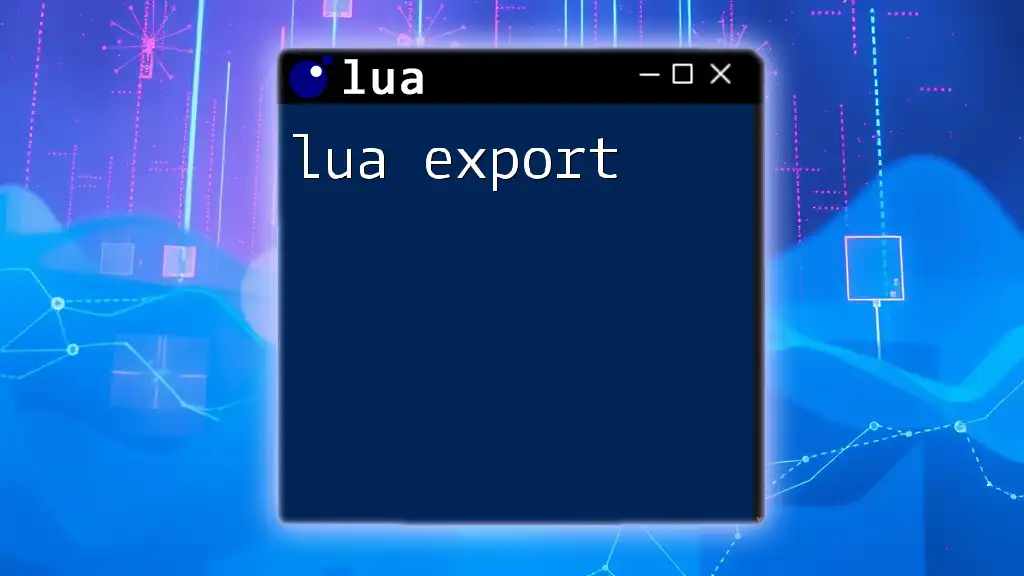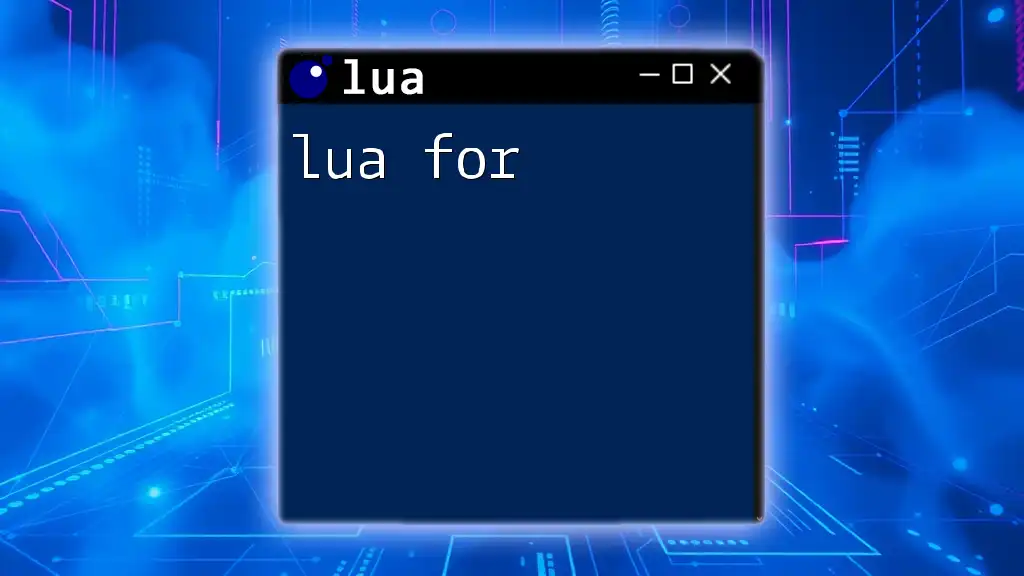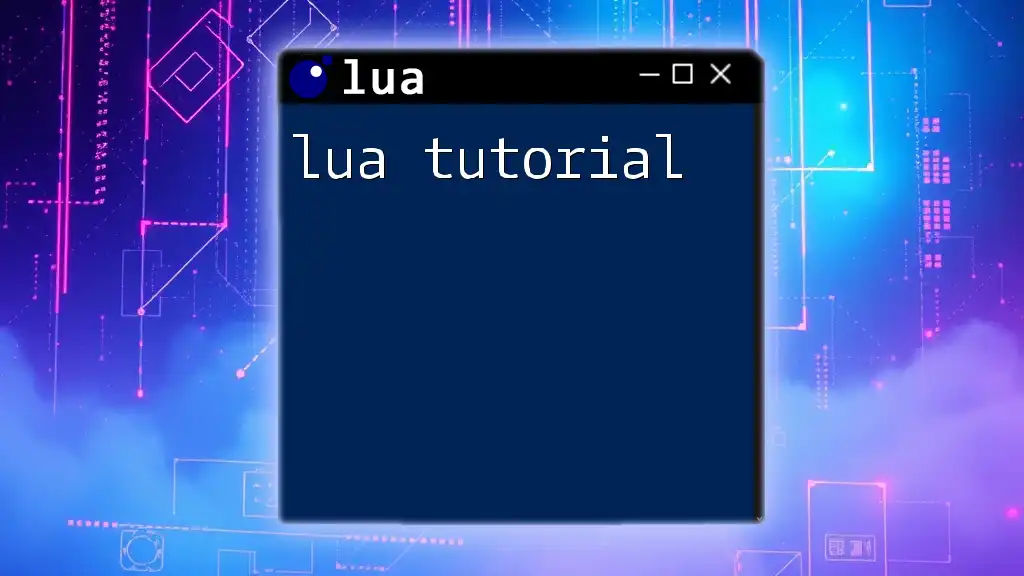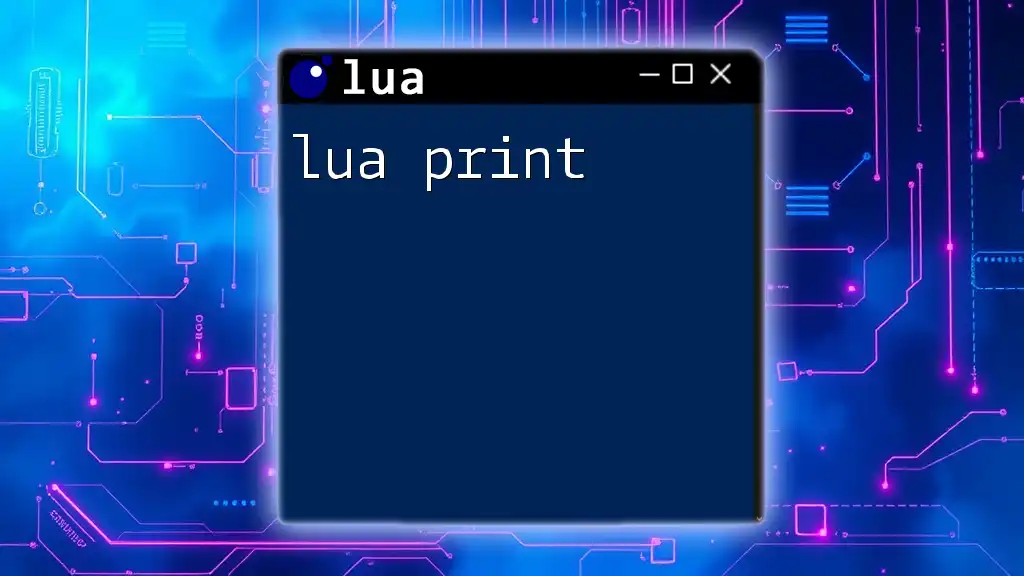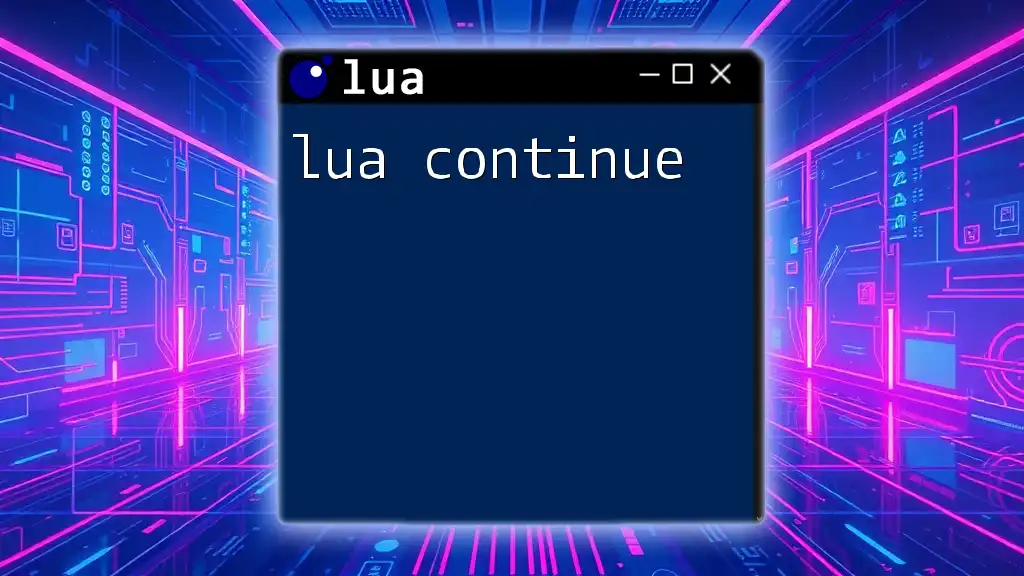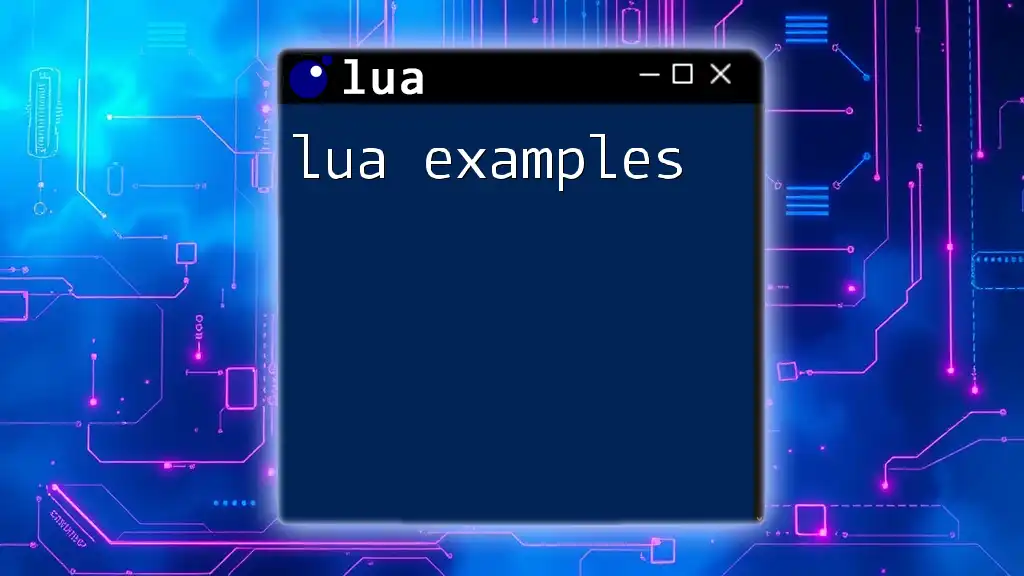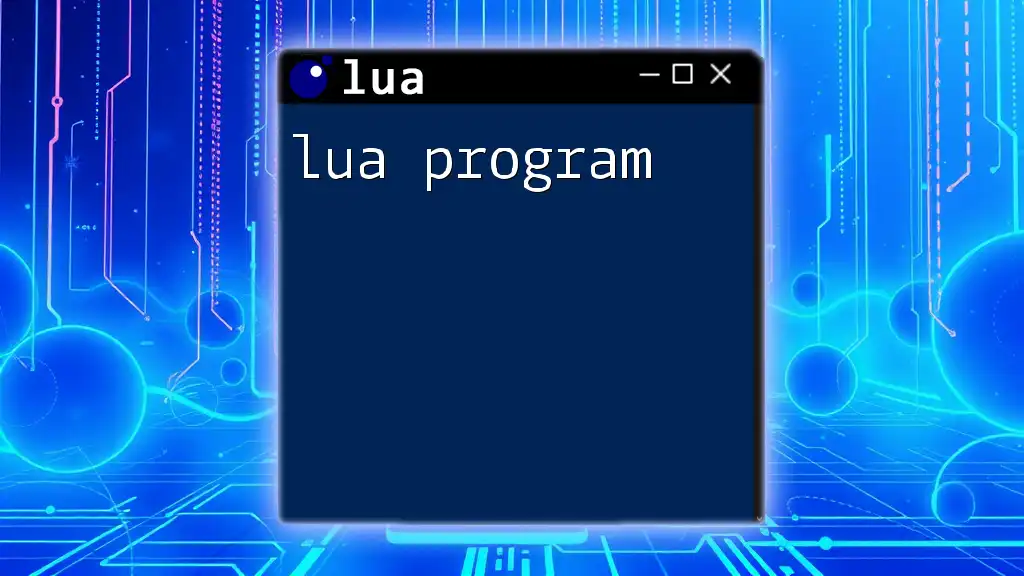In Lua, the `export` command is often used to define a function or variable that can be accessed outside of the current module or scope, facilitating better code organization and reuse.
Here's a simple example of how to export a function in a Lua module:
-- mymodule.lua
local mymodule = {}
function mymodule.sayHello(name)
return "Hello, " .. name .. "!"
end
return mymodule
In this example, the `sayHello` function is included in the `mymodule` table and can be accessed when the module is imported elsewhere.
What is Lua Export?
Lua export refers to the process of saving or converting data from Lua tables into various file formats or structures that can be utilized by other programs or systems. It is essential not only for sharing and storing data but also for integrating Lua applications with other languages and frameworks. In various programming tasks, particularly in gaming and data management, exporting data is a key requirement.
Common Use Cases for Lua Export
- Game Development: For exporting player statistics, game settings, or level design data.
- Data Processing: When Lua scripts are used for handling datasets that need to be analyzed or shared with other systems.
- Configuration Handling: Enabling user-defined settings saved in an easy-to-read format.
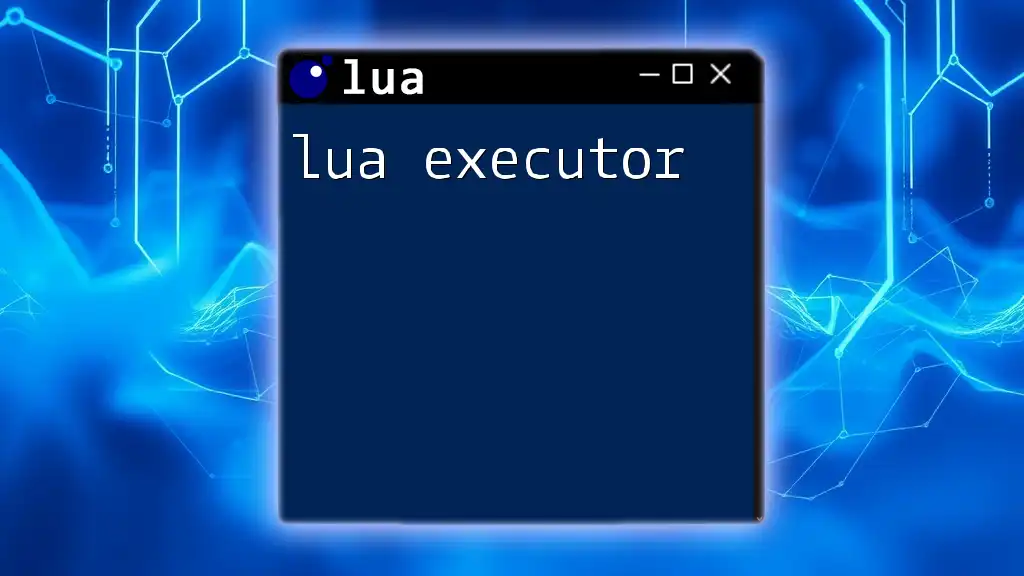
Understanding Lua Tables
Tables are fundamental data structures in Lua, serving as the primary means for storing collections of data. They are immensely flexible, able to represent arrays, dictionaries, and even objects.
Role of Tables in Lua
Tables allow you to group related data and facilitate complex data manipulations. Understanding how to utilize tables effectively is crucial for efficient Lua exports.
Creating and Manipulating Tables
Creating tables in Lua is straightforward. You can define a table and manipulate its contents using key-value pairs. Here’s a basic example:
local myTable = {key1 = "value1", key2 = "value2"}
myTable.key3 = "value3"
This snippet initializes a table with two entries and adds a third one, showcasing how easy it is to manage table data.
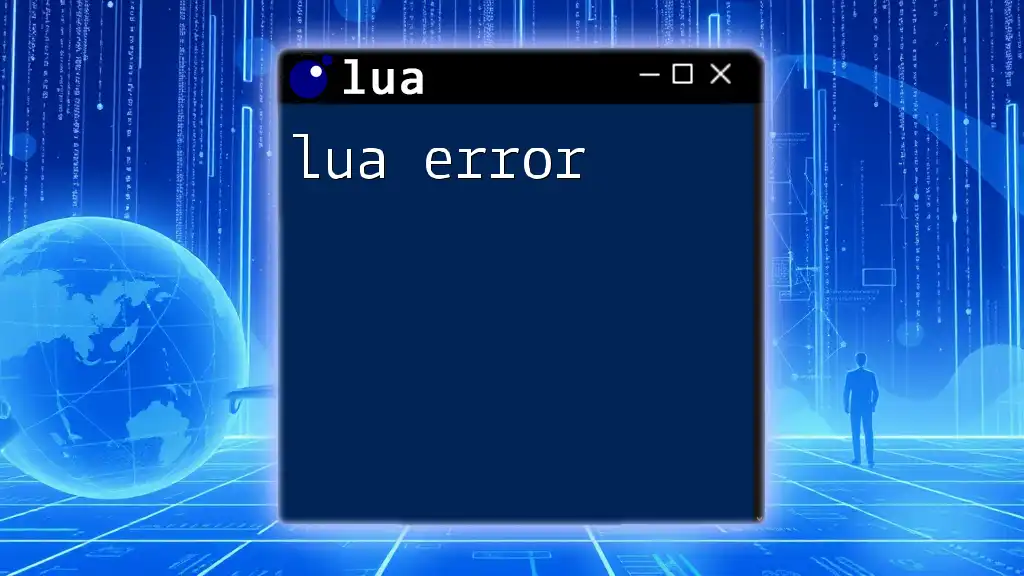
Exporting Lua Tables
Exporting tables is crucial for sharing or saving the data. The following sections explore several common formats for exporting tables.
Why Export Tables?
Exporting tables allows developers to leverage their Lua data in other environments. When your Lua application needs to interact with databases, web services, or even other programming languages, the ability to export data efficiently becomes paramount.
Common Export Formats
Different situations may call for different export formats. Three prevalent formats are:
- JSON: Ideal for web applications and easy data interchange.
- CSV: Straightforward for tabular data, widely supported by spreadsheet applications.
- XML: Supports complex data structures, prevalent in web services.
When choosing a format, consider the advantages and disadvantages of each based on your project requirements.
Exporting to JSON
JSON (JavaScript Object Notation) is a lightweight data interchange format easy for humans to read and write, and easy for machines to parse and generate.
Using the DKJSON Library
For exporting Lua tables to JSON, using a library like DKJSON simplifies the process. Here’s a basic implementation:
local json = require("dkjson")
local data = {name = "Lua", purpose = "Scripting"}
local jsonString = json.encode(data)
In this example, we require the DKJSON library to encode a Lua table into a JSON string. This string can then be used for various purposes, such as sending data over a network.
Best Practices for JSON Export
When exporting to JSON, it’s essential to handle special characters responsibly to avoid issues during parsing. Always validate the JSON output to ensure it’s correctly formatted before use.
Exporting to CSV
CSV (Comma-Separated Values) is a simple and popular format for representing tabular data. Exporting Lua tables to CSV format is relatively simple, allowing data to be read by most spreadsheet software.
Creating a CSV from Tables
To export to CSV, you can define a function that converts table data appropriately:
local function tableToCSV(data)
local csv = ""
for _, entry in ipairs(data) do
csv = csv .. table.concat(entry, ",") .. "\n"
end
return csv
end
This function iterates over an array of entries and concatenates each entry into a string formatted as CSV.
Real-World Example of CSV Export
Imagine you're developing a game and need to export player statistics. You could use the CSV output to generate easily read reports or import them into databases.
Exporting to XML
XML (eXtensible Markup Language) is another valuable format, especially if you require a structured representation of complex data.
Introduction to XML Structure
Understanding XML involves recognizing its tree-based structure, where data is nested with open and close tags. This makes it versatile for applications that require hierarchical data representation.
Exporting Tables to XML
You can create an export function for XML as follows:
local function tableToXML(data)
local xml = "<?xml version=\"1.0\"?>\n<data>\n"
for key, value in pairs(data) do
xml = xml .. string.format("<%s>%s</%s>\n", key, value, key)
end
xml = xml .. "</data>"
return xml
end
This function constructs a basic XML document by looping through a table and formatting key-value pairs into XML nodes.
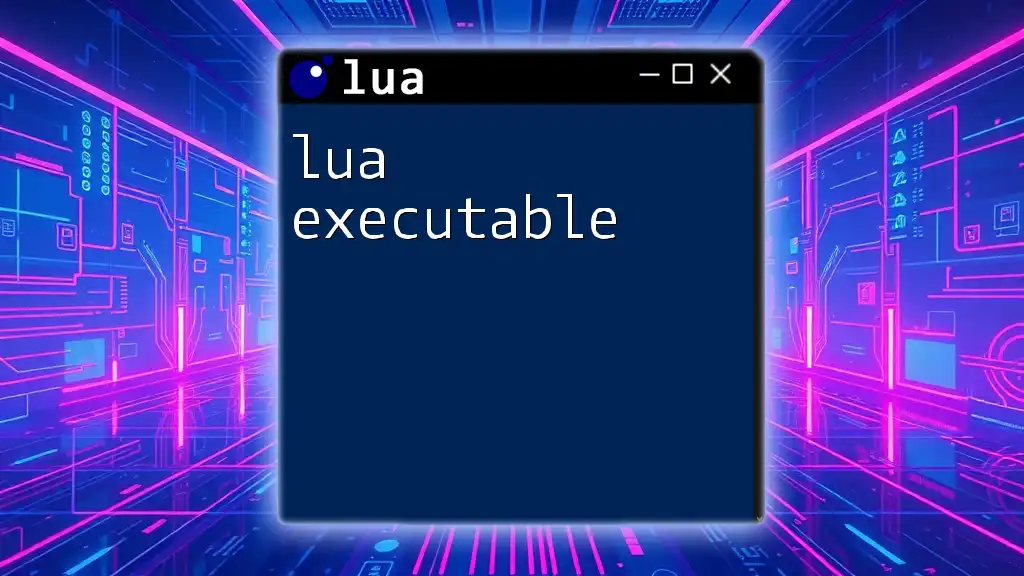
Advanced Export Techniques
Custom Export Functions for Specific Needs
In some cases, your export requirements may involve more specific configurations. Crafting custom export functions tailored to your use case is efficient. Consider user preferences, data types, and how the output will be utilized.
Handling Nested Tables
Exporting nested tables requires more complex logic. A simple recursive function can handle it:
local function exportNestedTable(t)
for k, v in pairs(t) do
if type(v) == "table" then
-- Recursive call for nested table
exportNestedTable(v)
else
print(k, v)
end
end
end
This snippet ensures that you can traverse and export any level of nested data within your Lua tables.

Best Practices for Lua Export
Understanding best practices can significantly enhance the quality of your export functions.
Ensuring Data Integrity
One important consideration is maintaining data accuracy while exporting. Validate your tables and handle errors gracefully to ensure that users receive consistent and reliable outputs.
Performance Considerations
Always be mindful of performance when exporting large datasets. Minimizing the use of memory-intensive operations, optimizing loops, and employing efficient algorithms are critical for maintaining performance as your data grows.
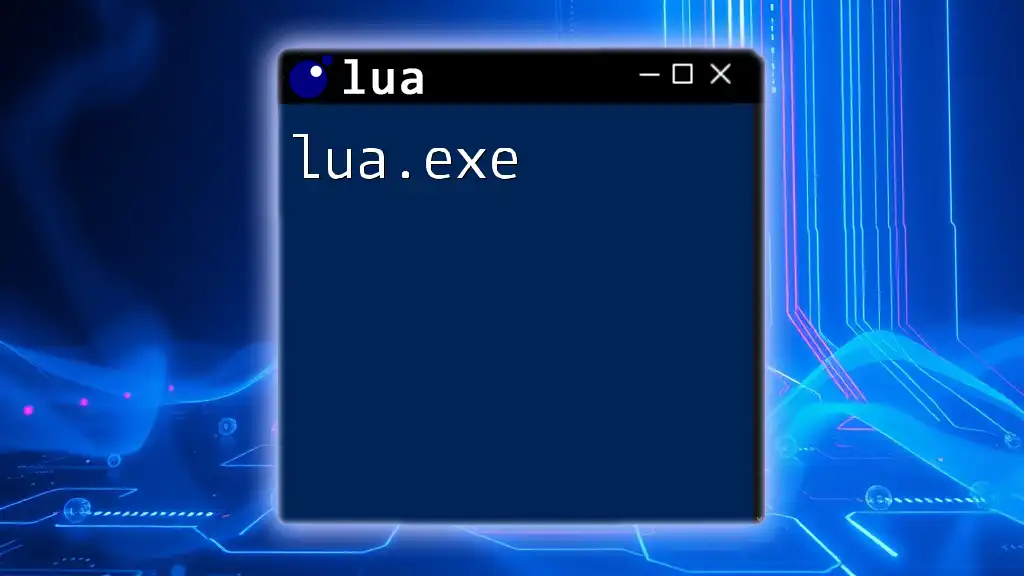
Conclusion
In summary, mastering lua export techniques is vital for effective data management in Lua applications. Understanding the various export formats, how to manipulate tables, and implementing advanced techniques allows you to tailor your exports to fit diverse applications.
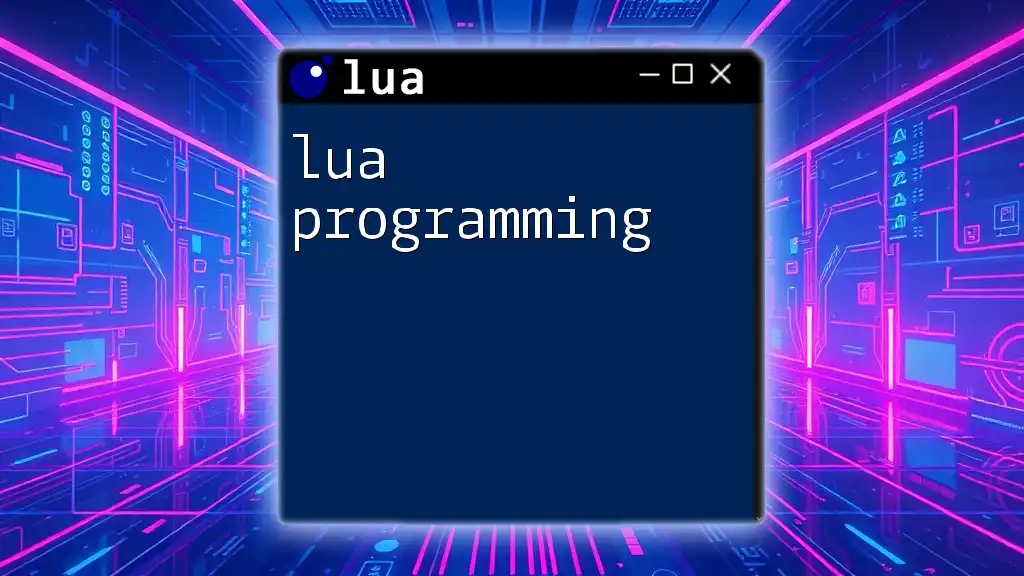
Additional Resources
While this guide outlines core export techniques, consider exploring additional materials such as books, online tutorials, and libraries specializing in Lua. Engaging with the Lua community can also provide valuable insights and support for your learning journey.

